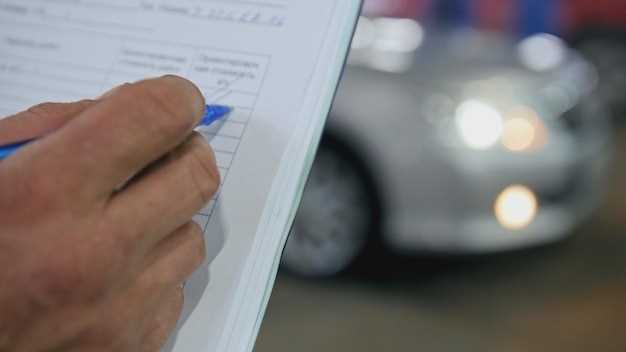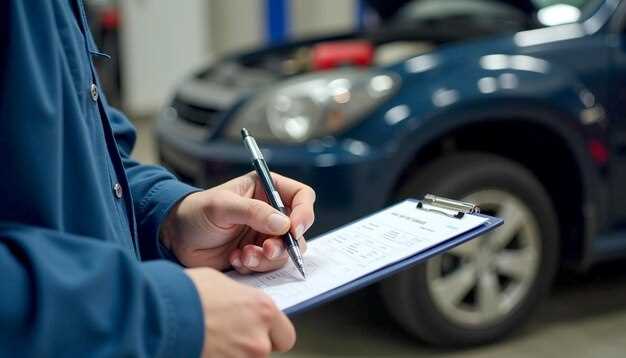
When purchasing a used car, assessing its exterior condition is essential to ensure you make a wise investment. A thorough inspection not only helps identify any damage but also provides insight into the vehicle’s maintenance history and overall quality. Utilizing a detailed checklist can help streamline this process and ensure no crucial detail is overlooked.
As you examine the exterior of the vehicle, focus on key areas such as the body panels, paint, and glass. Look for signs of damage, including dents, scratches, or rust, which may indicate past accidents or inadequate care. Furthermore, checking for inconsistencies in paint color can reveal if parts of the vehicle have been repaired or repainted.
Incorporating a checklist allows prospective buyers to systematically evaluate each component of the car’s exterior. This method not only saves time but also empowers buyers with the knowledge to negotiate effectively or decide against a purchase if significant issues are discovered. By being diligent in your inspection, you’ll increase the likelihood of driving away with a vehicle that meets your expectations and remains reliable for years to come.
Assessing Paint Condition for Scratches and Dents

When evaluating a used car, one of the vital aspects to inspect is the paint condition. This involves looking for any damage that may affect both the vehicle’s appearance and its long-term value. A systematic checklist can guide you through this process effectively.
Start by examining the car under proper lighting, as natural light can help highlight imperfections. Look for scratches, which can vary in severity from superficial blemishes to deeper marks that penetrate the paint layer. Use your fingers to feel for ridges or edges of the scratches–this can help determine how deep they are.
Dents are another critical aspect to assess. Check for any areas where the metal may have been pushed in, which can affect not only the aesthetics but also the integrity of the car. Run your hands over the body panels, paying attention to any irregularities that might suggest prior impact.
Note any spots where the paint appears chipped or scuffed, and assess if the damage is localized or widespread. Document your findings on your checklist as this can aid in negotiation or deciding whether to purchase the vehicle.
Overall, a thorough assessment of the paint condition regarding scratches and dents ensures that you are making an informed decision, potentially saving you from unforeseen repairs in the future.
Checking for Rust and Corrosion on Metal Parts
When inspecting a used car, one critical aspect to evaluate is the presence of rust and corrosion on metal parts. These conditions can lead to significant damage if not addressed promptly. Begin by conducting a thorough visual inspection of all exposed metal surfaces, including the body panels, undercarriage, and engine components.
Look for any signs of rust, which may appear as flaky, reddish-brown spots. Pay close attention to areas that are prone to moisture buildup, such as wheel wells, seams, and around doors. Corrosion can also manifest as bubbling paint or surface pitting; both should raise red flags regarding the car’s overall condition.
Use a flashlight to enhance your visual search in darker areas. If you discover any rust, check for deeper penetration by running your hand over the area to feel for roughness or flaking. Areas with extensive corrosion may compromise structural integrity, leading to potentially costly repairs.
It’s advisable to inspect areas beneath rubber seals and trim, as these hidden spots often retain moisture, accelerating corrosion. Additionally, assess the condition of the brake lines and fuel tank, as they are prone to rust and could pose safety hazards if not in good condition.
In summary, a meticulous visual inspection for rust and corrosion is crucial when evaluating a used car’s exterior. Identifying these issues early can save significant time and resources down the road.
Evaluating Tire Condition and Wheel Alignment

When inspecting a used car, evaluating the tire condition is crucial for ensuring safety and performance. Begin by examining the tread depth using a simple tread depth gauge or the penny test. Insert a coin into the tread; if you can see the top of Lincoln’s head, the tires need replacement. Look for uneven wear patterns, which can indicate alignment issues or improper inflation.
Next, check for any visible damage on the tires, such as cracks, bulges, or punctures. Any sign of damage may compromise the tire’s integrity. Additionally, inspect the sidewalls for scuff marks or deep cuts that could weaken the tires further. Don’t forget to verify the age of the tires by looking for the DOT code; tires older than six years may require replacement, regardless of tread depth.
Wheel alignment is another critical aspect of your checklist. Misalignment can lead to uneven tire wear, impacting the vehicle’s handling and fuel efficiency. During the inspection, observe how the car drives; if it pulls to one side or the steering wheel isn’t centered, it may need alignment adjustments. It’s advisable to have a professional perform a four-wheel alignment check to ensure optimal performance and prevent future tire damage.
In summary, assessing tire condition and wheel alignment is essential in evaluating a used car. Utilize this checklist to guide your inspection, ensuring you consider tread depth, tire damage, and alignment accuracy for a safe and reliable vehicle.






